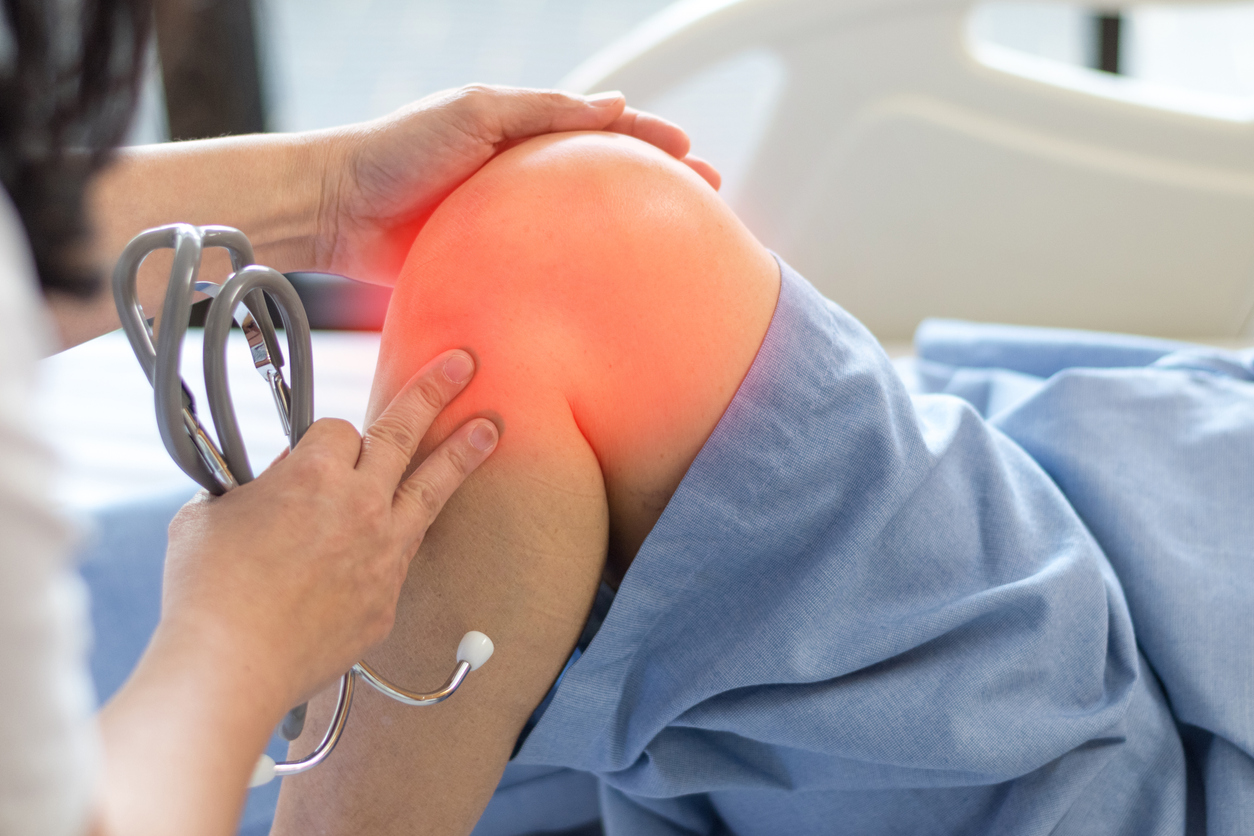
Being the body’s most complex joint and also one of the most-used joints, the knee is highly susceptible to pain and injury. Some of the most common knee injuries are arthritis, a torn ACL (anterior cruciate ligament), and bursitis.
Bursitis is an inflammatory condition that affects the small protective sacs around the joints called bursae (plural for bursa). Bursae are filled with fluid, and they look and act as pillows – cushioning the hard bony surfaces between a joint and the nearby muscles, tendons, and skin.
The inflammation of knee bursitis can cause severe knee pain, joint stiffness, and limited movement. Let’s talk about some of the issues that can be directly caused by knee bursitis, and where you can go in North Dakota for outstanding orthopedic treatment.
Signs and Symptoms of Knee Bursitis
Inflammation of the knee bursae is usually caused by irritation resulting from continuous friction of the bursa. It tends to occur in people who are in professions that require repetitive kneeling, which means that the symptoms progress gradually; however, receiving a hard blow to the knee can cause the symptoms to appear quickly.
Bursitis of the knee can have symptoms such as:
- Joint pain
- Joint swelling
- Redness
- Tenderness
- Joint stiffness
- Movement limitation
What Other Problems Can Knee Bursitis Cause?
The reason why bursitis warrants a medical evaluation and treatment by an experienced orthopedic doctor is that it can develop serious complications, such as the following:
· Septic Bursitis
Caused by a bacterial infection of the inflamed bursa, septic bursitis requires immediate medical attention. Symptoms of septic bursitis are those of typical bursitis in addition to the warmth of the affected area, fever, and a general feeling of sickness. This can lead to toxins in the bloodstream, systemic infection, organ failure, and toxic shock.
· Calcific Bursitis
As a result of longstanding untreated bursitis, the affected bursa can develop increased levels of calcium deposits – resulting in hardening of the bursa. Symptoms of calcific bursitis include severe joint pain with movement, which eventually results in permanent loss of movement in the affected joint.
· Ruptured Bursa
Untreated bursitis can cause the affected bursa to tear, or rupture. A ruptured bursa doesn’t mean that the sac explodes, but rather it indicates a tear in the bursal sac; the inflamed bursa fluid then leaks into the joint and surrounding tissue.
Symptoms of a ruptured bursa include more intense joint pain, loss of function, swelling, and an increased risk of infection.
Orthopedic Knee Experts in Bismarck, North Dakota
Knee bursitis can be a simple case of inflammation that responds well to resting the area, and it may require little to no medication to alleviate the pain. However, it can be troublesome if left unattended.
If you would like to have a professional evaluation, diagnosis, and possible treatment for your knee pain, visit us here at The Bone & Joint Center in Bismarck, North Dakota, or at any of our locations across the state. Our board-certified team of orthopedic surgeons can help you reach and maintain optimal, healthy joint function.
If you have any questions or would like to schedule an appointment with one of our outstanding orthopedic physicians, contact our team today at (800) 424-2663, or fill out our online form to request an appointment. We look forward to serving you!

